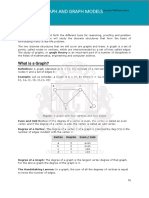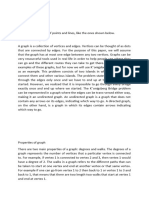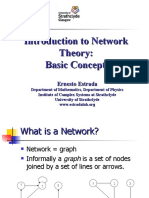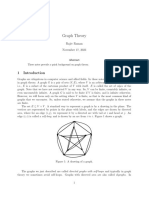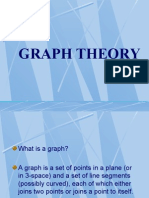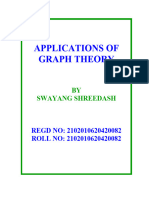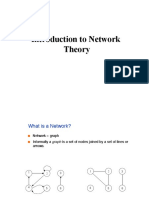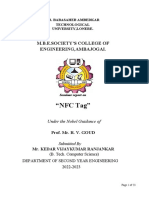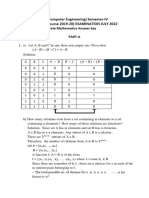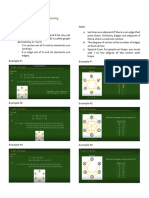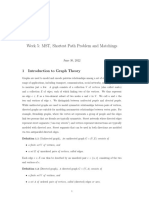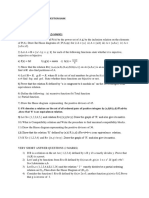0% found this document useful (0 votes)
127 views26 pagesGraph & Graph Models+123
A graph is a set of points called vertices connected by lines called edges. Graphs are used to model many real-world problems in mathematics, engineering, and computer science. A graph G is represented as G=(V,E) where V is the set of vertices and E is the set of edges. There are different types of graphs such as directed/undirected, connected/disconnected, planar/non-planar graphs. Graphs can be represented using an adjacency matrix or adjacency list. Important graph concepts include degrees of vertices, Euler and Hamiltonian graphs.
Uploaded by
Big BossCopyright
© © All Rights Reserved
We take content rights seriously. If you suspect this is your content, claim it here.
Available Formats
Download as PDF, TXT or read online on Scribd
0% found this document useful (0 votes)
127 views26 pagesGraph & Graph Models+123
A graph is a set of points called vertices connected by lines called edges. Graphs are used to model many real-world problems in mathematics, engineering, and computer science. A graph G is represented as G=(V,E) where V is the set of vertices and E is the set of edges. There are different types of graphs such as directed/undirected, connected/disconnected, planar/non-planar graphs. Graphs can be represented using an adjacency matrix or adjacency list. Important graph concepts include degrees of vertices, Euler and Hamiltonian graphs.
Uploaded by
Big BossCopyright
© © All Rights Reserved
We take content rights seriously. If you suspect this is your content, claim it here.
Available Formats
Download as PDF, TXT or read online on Scribd
/ 26





